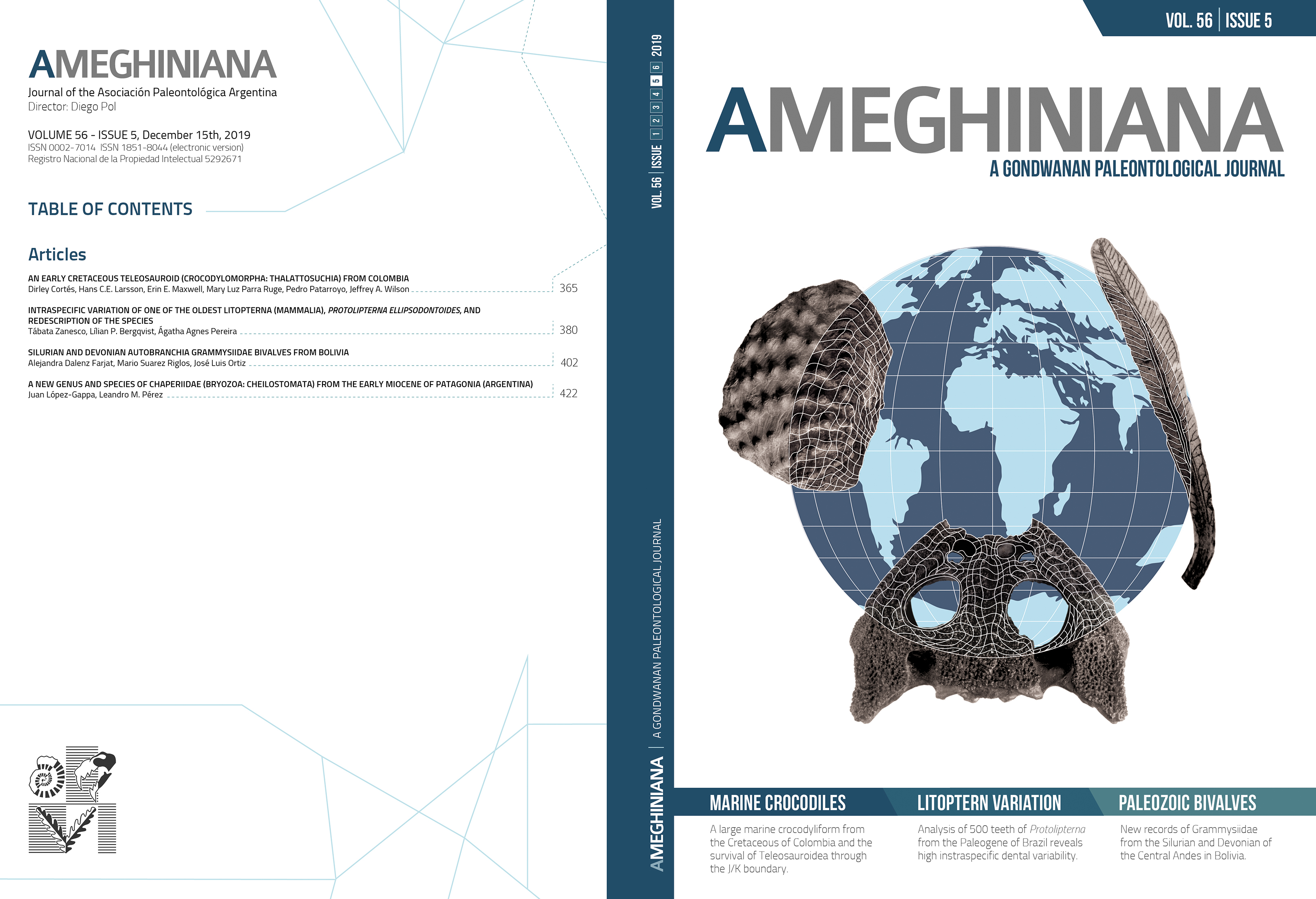A NEW GENUS AND SPECIES OF CHAPERIIDAE (BRYOZOA: CHEILOSTOMATA) FROM THE EARLY MIOCENE OF PATAGONIA (ARGENTINA)
DOI:
https://doi.org/10.5710/AMGH.30.08.2019.3281Keywords:
Aluis spinettai, Bryozoa, Chaperiidae, Early Miocene, Monte León Formation, Chenque Formation, ArgentinaAbstract
The family Chaperiidae reaches its highest biodiversity in the southern hemisphere. The main morphological feature characterizing the family is a pair of calcareous laminar structures associated with the insertion of the operculum occlusor muscles. The aim of this study is to describe Aluis spinettai gen. et sp. nov., from material collected in the Monte León, the Chenque, and the Puesto del Museo formations (early Miocene, Patagonia, Argentina). A. spinettai has erect bilaminar colonies, crenulated sutures between zooids, an extensive cryptocyst and spherical ovicells; gymnocyst, oral spines, and avicularia are absent. The new species exhibits a remarkable morphological convergence with a species of Aspidostoma from the early Miocene (Chenque Formation) of Patagonia. In some areas of the colony, the cryptocysts were pierced by circular drill holes made by an unknown predator. The stratigraphic distribution of A. spinettai ranges from ~19 to 17 Ma (Burdigalian). Its presence suggests a correlation between the upper levels of the Monte León Formation and the lower levels of the Chenque Formation. The paleogeographic distribution of this new species spans at least 500 km along the southern Atlantic coast of South America. The living representatives of the Chaperiidae in the Southwest Atlantic do not seem related to A. spinettai. doi: 10.5710/AMGH.30.08.2019.3281Downloads
Published
Issue
Section
License
Authors publishing in Ameghiniana have the option of making their article freely available online. Authors opting for the Open Access must pay a fee of $300 (US dollars) to cover article-processing costs and to ensure the article is made open access. Please contact the Production Team after the acceptance of your manuscript if you are interested in making your article Open Access. This option implies by default a license Creative Commons Attribution Non-Commercial-NoDerivs License (CC BY NC ND). If your funding institution requires a different licensing option please communicate this to the Production Team after the acceptance of your manusctipt.











